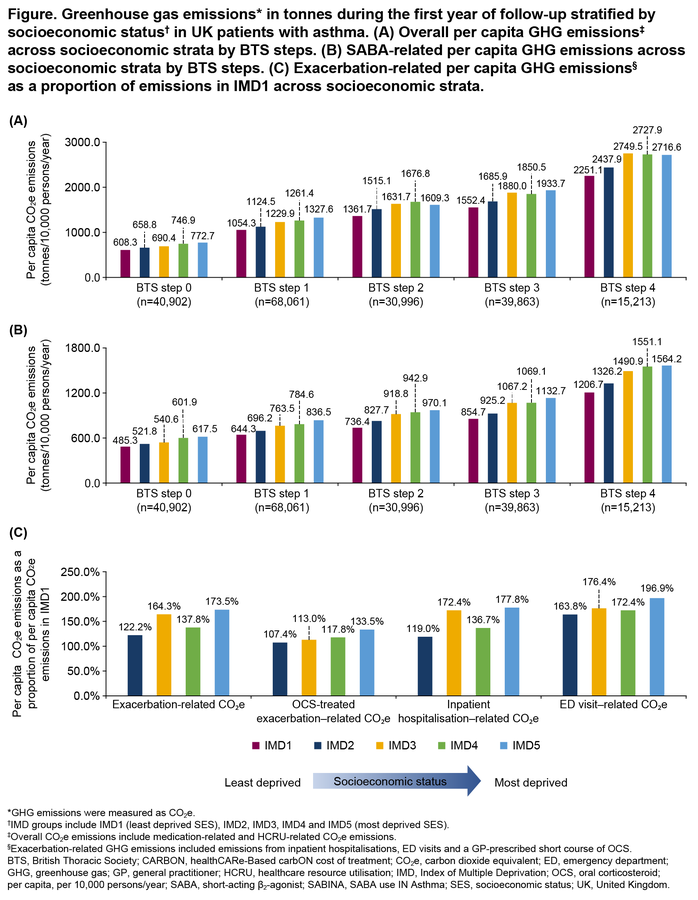Abstract
Background: Socioeconomic deprivation is associated with worse asthma outcomes. Poor asthma control is linked with a high asthma care?related carbon footprint, largely SABA-induced, with smaller contributions from HCRU (Wilkinson A et al. ERJ 2021;58:OA76). However, the environmental impact of asthma care in relation to socioeconomic status (SES) requires further examination.
Aim: To describe asthma care?related greenhouse gas (GHG) emissions by SES in the UK.
Methods: Patients with asthma (?12 yrs) in the CPRD (2008?2019) with linked SES data from the Index of Multiple Deprivation (IMD) were included. One-year per capita GHG emissions for medications, HCRU and exacerbations were calculated. Asthma severity was based on 2016 BTS treatment steps.
Results: Overall per capita GHG emissions were higher in patients with higher IMD scores and at higher BTS steps (Fig A). Most of this disparity was due to higher SABA-related per capita GHG emissions (Fig B). Per capita GHG emissions due to ED visits, inpatient hospitalisations and OCS-treated exacerbations also appeared to increase with higher IMD scores (Fig C).
Conclusion: The carbon footprint of asthma care increased with higher socioeconomic deprivation. Targeting quality improvement to areas of higher deprivation could help address health inequities and improve patient outcomes while reducing the carbon footprint of asthma care.
